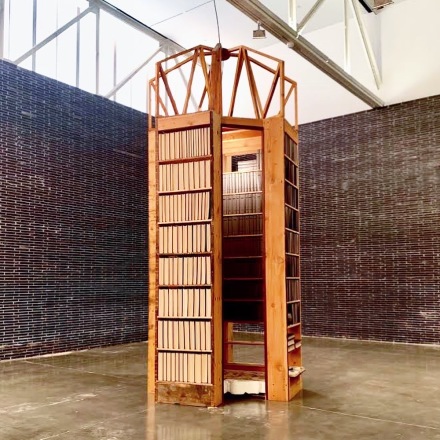
Theaster Gates, Black Vessel (Installation View), via Art Observed
Marking his first solo exhibition in New York City, artist Theaster Gates has touched down at Gagosian Gallery, bringing with him a diverse and conceptually-rich selection of works that underscore his work as a prominent activist and cultural force in American art. Underscoring the artist’s complex and intuitive work with a range of materials, equally anchored in the histories of racial and social justice movements, and in the canon of art history, not to mention the artist’s own personal narrative, the show traces a range of ideas and concepts through the artist’s body, making for a powerful first show in the Big Apple.
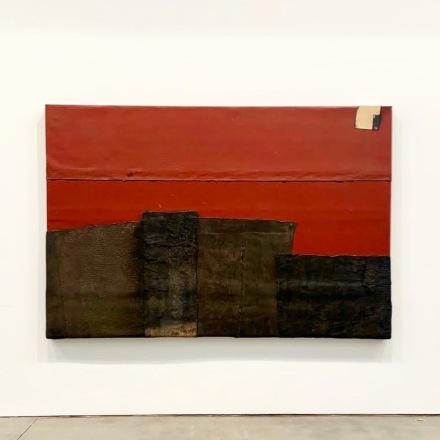
Theaster Gates, Black Vessel (Installation View), via Art Observed
Through an art practice predicated on cultural reclamation and social empowerment, Gates exchanges and recharges objects and ideas, proposing the artwork as a communicating vessel or sacred reliquary of recollected histories, critical vitality, and shared experience. Traversing a broad range of formal approaches such as painting, sculpture, sound, and performance, as well as the processes of salvaging, archiving, and place making, he delivers penetrating social commentary on labor, material, spiritual capital, and commodity within a close examination of the urban condition. This show is no different. The Brick Reliquaries (2020), Gates’s latest sculptural works, showcase a series of Magnaese blocks to superheated states, turning their original states into fused objects, blending parts and pieces of the support structures and original material into a striking whole.
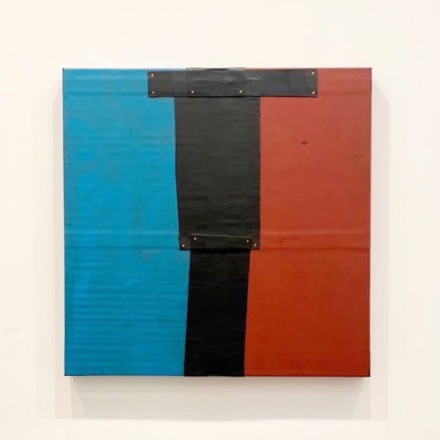
Theaster Gates, Black Vessel (Installation View), via Art Observed
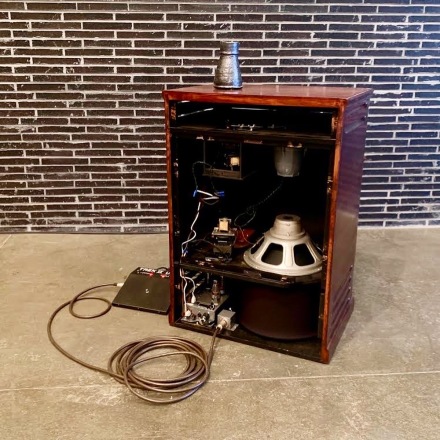
Theaster Gates, Black Vessel (Installation View), via Art Observed
By contrast, the show also presents a series of his ongoing Civil Tapestries, which incorporate histories of social injustice into the language of the Minimalist movement. Employ the materials and labor of the roofing profession, the pieces create simple, yet dynamic arrangements in bright hues to emphasize exchanges of labor and history, culture bound up in value exchange systems between manual and conceptual labor.
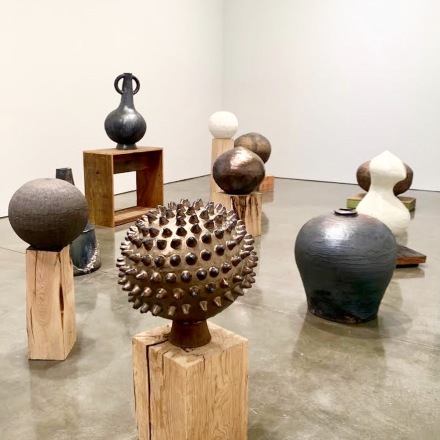
Theaster Gates, Black Vessel (Installation View), via Art Observed
Another body of work on view, Walking Prayer, sees Gates pulling from a wide-ranging historical collection of published books on Black experience, rebinding them in black and embossing the spines with language to constitute one long poem or performative score that moves among many modes of address. Arranged in an original cast-iron Carnegie open-access library shelving unit, a modular design that helped revolutionize modern libraries, Walking Prayer invites the viewer to engage in Gates’s poetic invocation where reading becomes a processional act and the gallery transforms into a latent warehouse of emotional and spiritual devices. A single Leslie speaker amplifies a single chord from a Hammond B3 organ—a pairing synonymous with Black church gospel and jazz—in a minimal sound loop, building to a crescendo to further sacralize the space.
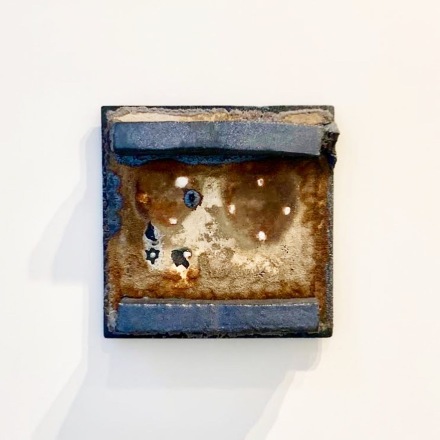
Theaster Gates, Black Vessel (Installation View), via Art Observed
Theaster Gates at Gagosian [Exhibition Site]



